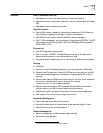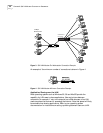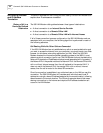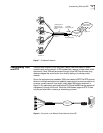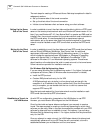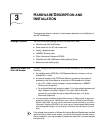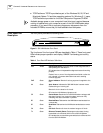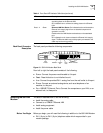
22 CHAPTER 2: 56K LAN MODEM FUNCTIONALITY DESCRIPTION
Call Routing Protocol
and IP Address
Translation
This section describes the call routing protocol used by the 56K LAN Modem and
explains how IP addresses are translated.
Placing a Call to a
Previously Defined
Destination
The 56K LAN Modem distinguishes between three types of destinations:
■ A direct connection to an Internet Service Provider
■ A direct connection to a Remote Office LAN
■ A direct connection to a Remote Office LAN with Internet Access
If all of these connection types are configured on the 56K LAN Modem and are
associated with your computer, the following algorithm is performed for each of
the following scenarios.
Call Routing While No Other Calls are Connected
If the 56K LAN Modem has not established any calls to a remote destination and
you want to access the Internet from your computer, you simply launch your Web
browser (or whichever networking application you like). When the 56K LAN
Modem receives the information packet requesting access to the WAN, it must
determine which connection type to use. The LAN Modem looks at the destination
Network ID (destination IP address and subnet mask) associated with the packet. If
the Network ID of the packet matches the Network ID of the Remote Office LAN,
with or without Internet access, then the call is placed to the remote LAN. If it
does not match the Network ID of the remote LAN, with or without Internet
access, then the call is routed to the direct ISP connection.
Once the connection is established, any authorized user on the LAN can use this
connection. The 56K LAN Modem will translate each individual user’s local IP
address into a single, shared IP address (assigned by the remote location), allowing
shared access to the remote location. The following example shows three users
sharing a connection to the Internet and depicts the IP address translation as it
occurs in the LAN Modem.




